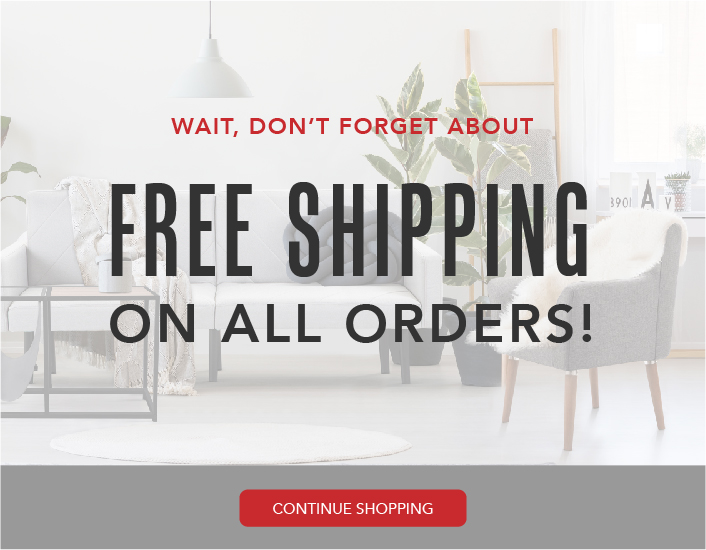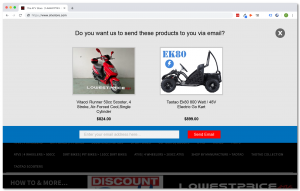[Vol. 1] On Site Campaigns: How to Capture Ecommerce Leads & Drive Conversion
August 8, 2019
A successful ecommerce company spends a lot of time and effort advertising and promoting their products through various channels to drive new traffic to their site… then 7 out of 10 customers fail to convert. In the past, you’d install a one-off cart abandonment plugin, turn it on and hope for the best… But this just isn’t working anymore. Not in 2019.
Due to the fact that the average ecommerce sale now requires around 4-6 touchpoints before a customer will ultimately decide to purchase, the days of sending the same message to everyone that visits your website (the spray & pray method) are over.
Instead, you need to implement a sales strategy that incorporates sending the right message at the right time to encourage engagement and fuel conversion along the entire customer journey.
In the first part of our Customer Recovery Series, we’re exploring the importance of on-site retargeting campaigns, and the tactics you can implement to engage & optimize the traffic you already have. But first, a little info on the differences between on-site & recovery campaigns.
Recovery campaigns
A recovery campaign is a series of targeted emails sent to a customer who visited your website but failed to convert. There are two main types of recovery campaign:
- Cart abandonment – this targets shoppers who added products to their shopping cart before abandoning your website.
- Browse abandonment – this targets shoppers who left before adding anything to their shopping cart (also known as window shoppers).
The aim of these campaigns is to bring hot-but-lost leads back to your website to convert; not necessarily to reduce the chances of abandonment happening in the first place – that’s where on-site retargeting campaigns come in.
On-site retargeting campaigns
An on-site retargeting campaign uses a combination of tools and techniques to target online shoppers before they abandon your website or shopping cart. They have two main goals:
- Encouraging website visitors to convert rather than abandon, using tools including:
- Perfectly timed on-site offers and messages
- Exit intent offers
- Live chat.
- Gathering leads and contact information to use should abandonment happen, using tools including:
- Real-time lead capture & behavioral analysis;
- Exit-intent popups;
- “Send My Cart” tools; and
- Push notifications.
It’s important to note that an on-site retargeting campaign works together with, not instead of, your recovery campaign. It reduces the problem of abandonment by increasing conversions while gathering the necessary information for your recovery campaign to perform if and when needed. Let’s take a closer look.
On-Site Campaigns to Drive Conversions
We recommend two main on-site campaigns that you should implement to drive more people through your checkout and decrease the volume of browse and cart abandonment happening on your eCommerce website. These are:
Exit Intent & Delayed Popup Offers
There are two types of triggered offers you should present to your shoppers, in order to encourage engagement; 1: Delayed, which are set to appear after a certain amount of time a shopper has been on your site, and 2: Exit Intent, which attempt to disrupt your would-be abandoners exit by presenting the offer as they attempt to leave.
The aim of these offers is to combat the potential reason for abandonment with a relevant offer or discount that addresses their concerns. Common offers used by our customers include:
- Free shipping reminders or discount codes;
- 10% (or any amount) off total basket spend
- New customer sign-up offers
- Contests & sweepstakes; and
- Reminders of financing options (i.e. Finance your purchase with a PayPal credit card…)

Exit intent and delayed popup offers can be further tailored to achieve optimal results by implementing:
- An “abandoned cart exit intent popup” strategy – activating popups only for those who have items in their cart, but you have not yet captured their email address; or
- An all-encompassing exit intent popup strategy – activating popups for all visitors to your website who are attempting to exit.
Live chat
Live chat functionality allows visitors to talk to a customer service agent while on your website. The aim of live chat is to overcome any factors that might cause abandonment by providing relevant information or help to assist. Common queries received via live chat include:
- What are the measurements of this item;
- How quickly can this item be delivered; and
- Do you have any discount coupons I can use.
Many LiveChat tools offer a “bot” option as well. This allows you to create pre-loaded answers to many frequently asked questions about your products, eliminating much of the need for a live support rep to be available.
On-Site Campaigns to Capture Leads for Recovery Campaigns
There are four main ways to capture leads and subscribers for your recovery campaigns, to use should cart or browse abandonment occur. These are:
Real-time, site-wide email capture
Real-time, site-wide lead capture tools allow you to capture around five times more emails than a basic cart abandonment plugin will allow. How? They capture email addresses entered across your website in real-time (meaning, as it’s being typed, we’re recording it), which prevents the requirement for shoppers to be signed up, logged in, or to click on any “Submit” button.
Exit intent popups
Exit intent popups aren’t just useful for driving conversions; they also give you an opportunity to collect email addresses in return for the deal or discount offered. The customer receives their offer, and you get their email address to queue into the appropriate recovery campaign should the offer fail to convert.
“Send My Cart”

Similar to an exit intent popup, a “Send My Cart” tool can give online shoppers an alternative to abandonment by allowing them to send themselves their shopping cart and return to it at a later time. In exchange, you get their email address and can subsequently set up an email drip sequence with gentle reminders, targeted offers and other tactics to encourage conversion. .
Push notifications
Email addresses aren’t necessarily the best leads. Push notifications allow you to retarget shoppers directly in their web browser – at a time and place when they’re more likely to click back to their basket and complete their purchase.
On-site Campaign Tips & Best Practices
So, now that you know the tools required for an on-site retargeting campaign, how do you go about implementing these tools to maximize your conversion rates and the number of leads captured?
Tips and best practices for driving initial conversions
Popups and live chat aren’t simple plug and play tools – they need optimizing themselves with:
Relevant offers – using a combination of customer feedback and abandoned session replay data, identify your largest conversion leaks and use this insight to create a relevant offer for your exit-intent popup. For example, if you’re losing a lot of customers as they’re supposed to be choosing a delivery option, consider implementing a free or discounted shipping exit intent offer.
Quick responses – live chat should be live, which can be difficult to achieve without a 24/7 customer service team. Overcome this by using intelligent live chatbots that can answer common queries automatically when your customer service agents are sleeping.
Timing – Exit Intent Popups are automatically timed & generated, but its important to perfect the timing of your delayed popup offers by using real-time session data to analyze how long users typically spend on your webpages.
Tips and best practice for driving lead capture
Your on-site lead capture tools can also be optimized by including:
Variety – you website visitors will all have different motivators and concerns, which means that you should be using all of the above tools and incentives in conjunction with each other to increase the chances of a customer entering their email address.
Behavior segmentation – real-time, site-wide capture tools collect leads at every stage of the buying journey, meaning that your existing abandonment email campaign won’t be relevant to all. Queue leads into a relevant recovery campaign by segmenting users based on their level of engagement.
Top tip: CartStack automatically segments users based on behavioral data captured while they were on your website.
Psychology – encourage the subconscious mind to enter contact information by using psychology tactics such as scarcity (“only two remaining”), loss aversion (“don’t lose your cart’s contents”), and risk aversion (“sign up to receive your delivery in two-days”).
Summary
The first stage in any customer recovery strategy should look to reduce the problem of abandonment for happening in the first place, and increase the ability to save abandonment should it happen nonetheless. On-site retargeting campaigns do just this – optimizing the traffic already on your website to reduce the chances of browse and cart abandonment from happening, while gathering leads for the second stage in your customer recovery strategy – but more on that next time.





